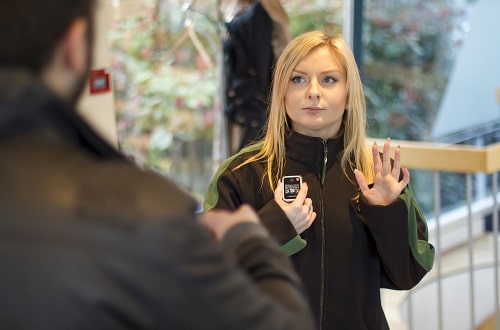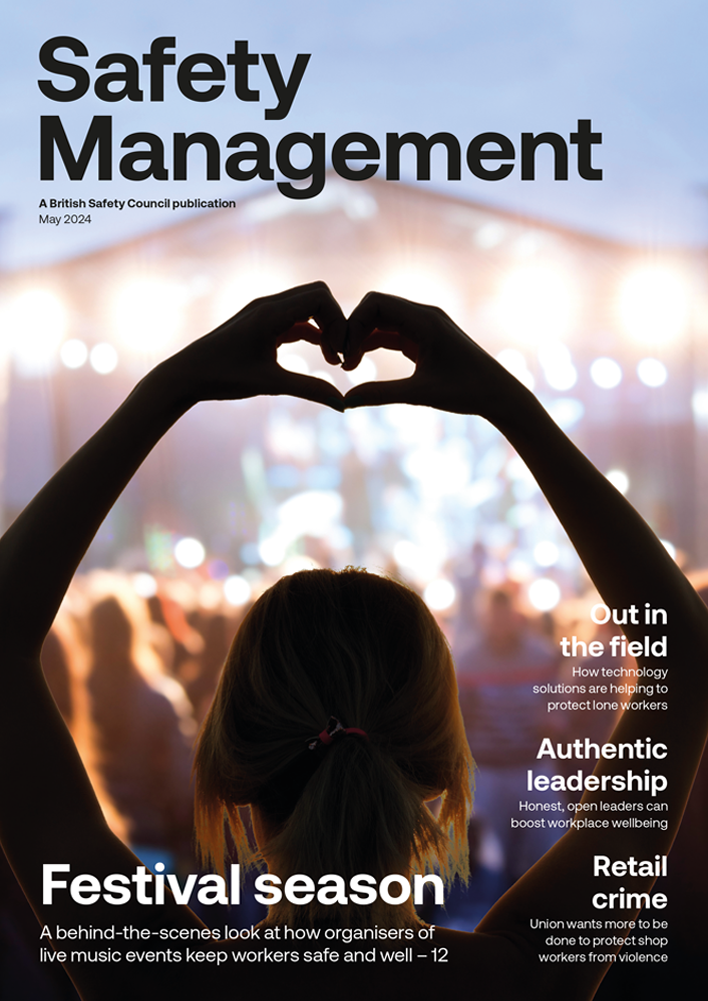Although there is no ‘one-size-fits-all’ solution to managing work-related road risk, it’s crucial that businesses have an evolving and proactive fleet safety strategy that keeps abreast of changes in legislation, is implemented from the top down and targets continuous improvement.
Features
Navigating the changing fleet risk landscape
The latest statistics suggest that the UK road network is not becoming any safer with fatalities broadly returning to pre-pandemic trends. When you consider that around a third of all road deaths and a fifth of casualties involve someone driving for work, it is clear that fleet operations have an opportunity to make a real difference by better managing work-related road risk.
Growing dangers for vulnerable road users
Recently published figures from the Department for Transport show that deaths on UK roads increased by 8.7 per cent last year. While significant new changes to The Highway Code came into force at the beginning of 2022, where road users most at risk in the event of a collision are prioritised in the new hierarchy, this has yet to translate into any significant reduction in collisions involving vulnerable road users (VRUs).
 A study, conducted by UCL and Agilysis, found that 39 per cent of pedestrian fatalities in the UK were in collision with someone driving for work. Photograph: iStock
A study, conducted by UCL and Agilysis, found that 39 per cent of pedestrian fatalities in the UK were in collision with someone driving for work. Photograph: iStock
Cyclist deaths did see a 23.4 per cent reduction year-on-year, but the total number killed or seriously injured rose almost 10 per cent to 5,602, while motorcyclist, pedestrian and e-scooter fatalities also increased. In separate figures from Transport for London (TfL), people walking, cycling and motorcycling remain the most at risk on the capital’s roads, making up 80 per cent of those people killed or seriously injured in 2022.
Moving forward, VRUs need to become a greater concern for fleets. A study, conducted by UCL and Agilysis, found that 39 per cent of pedestrian fatalities in the UK were in collision with someone driving for work, resulting in up to 11 pedestrian deaths a month. This is a staggering number, even before you factor in other VRU fatalities, and the situation is likely to get worse before it gets better.
The Covid pandemic changed a lot of mobility habits, with a lot more people walking or cycling. There was also a large increase in e-scooter users, especially in urban areas. At the same time, we have seen a significant rise in the number of ‘last-mile delivery’ vans on the roads and people working in the gig economy, growing the number of occupational road users that fall outside of corporate road safety and driver training strategies.
Risk management response
There is not a ‘one-size-fits-all’ solution for any organisation when it comes to managing work-related road risk.
It will largely be dependent on existing culture, job roles, vehicle types and existing communication processes, but there still must be a strategy that is implemented from the top down and targets continuous improvement.
 Nigel Lawrence: "Technology is a bit of a double-edged sword when it comes to road safety."
Nigel Lawrence: "Technology is a bit of a double-edged sword when it comes to road safety."
One of the main challenges is to avoid becoming complacent about driver safety, because an ongoing, evolving and proactive programme is needed that meets changes in legislation and business structure.
There is also a risk that if an organisation is not fully committed to implementing and enforcing a fleet safety strategy, a serious driving incident could occur before any initiative can take effect.
Unsurprisingly, organisations vary massively in how they approach road safety and driver education. There are those that do no training whatsoever, believing that it is very much the employees’ responsibility to keep up-to-date with their requirements, while others are completely training-centric and champion the cause. Driving for or to work is one of the most at-risk situations an employer can put their employees in, and yet this can be commonly overlooked. Ongoing training alongside the drip feeding of safety messages is really important, but it is about getting the balance right and ensuring communication is inclusive across all staff, not just those involved in operational driving.
One discrepancy that we often see is where an organisation only focuses on certain areas of their fleet operation. For example, they might have a comprehensive programme aimed at van drivers, but completely overlook car or grey fleet drivers (something particularly ill-advised as cars continue to be the main vehicle type involved in collisions). There needs to be an overarching strategy, including consistent training and engagement initiatives, that targets all areas of risk to safeguard all fleet drivers and other road users.
Mental health impact on road risk
Mental health is a growing, and much more recognised challenge for employers. It is hardly surprising given the impact of the pandemic over the past few years and more recently with the cost-of-living crisis. If you are seeing a rapid decline in a driver’s behaviour and performance, there could be a possibility that this is the result of a personal matter. Taking a proactive approach and providing the necessary tools, resources and support for your drivers’ wellbeing is therefore crucial.
Excessive stress is likely to lead to emotionally-led decisions and potentially lower concentration on the driving task, which in turn will increase the chances of a collision occurring. In the workplace itself, there is a real challenge to mitigate the impact of pressured environments within a fleet operation that may impact on road safety. If you take home delivery as an example, drivers can be pushed to complete high volumes of drops within strict time windows, so there is a risk that road safety becomes less significant when compared with operational performance.
Support for employee wellbeing, especially in larger organisations, has really ramped up in recent years, but there is still so much to do to promote awareness. There needs to an openness that empowers employees to raise issues and gain the support they need. People are often reluctant to admit they are struggling, so fostering a safety culture where they feel comfortable discussing any problems they might be facing, whether at work or home, ensures that drivers are not on the road unnecessarily upset, stressed or distracted.
The role of technology
Technology is a bit of a double-edged sword when it comes to road safety. While many current tools such as fleet and video telematics are designed to help reduce collisions and mitigate fleet risk, there is also a danger of distraction from a growing number of in-vehicle systems that can have an adverse effect on safety.
By far the biggest concern is the use of mobile devices behind the wheel. Though the use of hand-held mobile devices while driving is illegal, it is nowhere near being as taboo a subject as drink and drug driving, even though using a mobile device can make a driver four times more likely to crash. In fact, reaction times are two times slower if you are texting using a hands-free phone than if you drink drive, increasing to three times when using a hand-held phone.
Too few organisations take a zero-tolerance view to mobile phone use, and many still operate a culture where it is okay to join audio and video meetings from a moving vehicle. Participating in long calls while driving comes with huge associated risks and should never be deemed an acceptable practice. Of course, for many high-mileage drivers their vehicle is also their workplace, but it still must be a safe workplace.
Certain technology is of course playing a significant role in reducing road risk. By bringing together multiple streams of data from a range of sources including telematics, vehicle cameras and driver behaviour monitoring, it is possible to create a holistic view of risk, and a complete picture of where the potential dangers lie.
The challenge is to have the means of bringing all the relevant information together into a single system to gain actionable insight that can be used to improve the safety and performance of drivers.
However, simply bringing together the best technology within the marketplace is not enough.
It is also crucial to have a robust safety strategy underpinning these systems that an organisation can get behind, identify with and work towards. If not, it is unlikely to achieve the desired results in terms of risk reduction.
Work-related road risk is a constantly changing landscape, especially after the turbulence of the past few years, so fleets need to keep on top of the latest legislative, business and operational requirements. This will ensure they can have the programme and processes in place to contribute to a safer road network.
For more information see: applied-driving.com
Nigel Lawrence is director, Client Partnerships at Applied Driving
FEATURES

Purchasing body-worn cameras: 10 top tips
By Alasdair Field, Reveal Media on 13 May 2024
Body-worn cameras can reduce the risk of violence and threats to staff by providing a deterrent effect and documentary evidence for pursuing aggressors, but it’s important to carefully consider issues like functionality, data storage and user training during the selection process.

Vulnerable workers: protection is key
By Naz Dossa, Peoplesafe on 13 May 2024
From working alone to commuting after hours, workers can be vulnerable to threats, aggression and harassment – but training and the right technology can help.

Progress made and challenges ahead – Grenfell six years on
By Aisha Farooq, Fire Protection Association (FPA) on 01 August 2023
On the sixth anniversary of the Grenfell Tower fire, 2023 has seen a significant rollout of legislative changes to fire safety in high-rise residential buildings that highlight the progress made and the challenges that yet remain.



